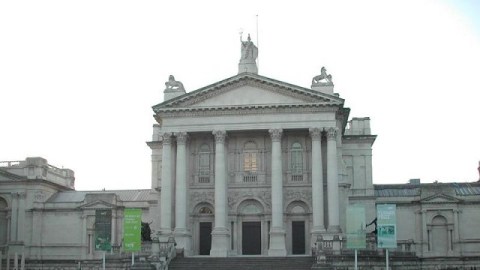Should Artists Run Museums?

The idea of artists running museums sounds to many like allowing the inmates to run the asylum. A profile in the current issue of The New Yorker of Tate Gallery Director Nicholas Serota by Calvin Tomkins titled “The Modern Man: How the Tate Gallery’s Nicholas Serota is reinventing the museum” characterizes Serota’s secret formula for success as taking an “artist-centered approach” in which the museum asks contemporary artists what they would want in a museum. Serota, once considered an outrageous and outraging outsider by the British art establishment, now stands as the gold standard for art directors worldwide thanks to his track record of bringing contemporary art to the masses and getting them to enjoy it. If Tomkins is right and Serota’s “reinventing” the idea of the museum, does this mean that artists (at least indirectly) should run museums?
Tomkins continues his half-century reign as the premier chronicler of characters from the contemporary art scene with this piece on Serota, which manages to give a full picture of the man while simultaneously showing how Serota’s approach ripples throughout the art world. Tomkins does a great job of setting up Serota’s entrance into the art establishment by giving a quick history of how the Tate Gallery (shown above) neglected important modern British artists such as Francis Bacon and Lucien Freud for years, despite the remarkable acceptance of modernist literature, theater, and dance by the British public. When the distance between the national museums and the nation itself threatened to yawn even wider, Serota stepped in to fill the breach.
Serota oversees the operations of all four Tate museums—Tate Britain, Tate Liverpool, Tate St. Ives, and Tate Modern—each of which has its own director, but it’s the Tate Modern that emerges as Serota’s greatest success. Serota personally advocated for the current site of the Tate Modern, which was an abandoned power station along the Thames across from St. Paul’s Cathedral. While many wanted to partition the large space into smaller galleries, similar to the conversion of the Musée d’Orsay from a cavernous railway station in Paris, Serota pushed for a larger space after considering the contemporary art trend for bigger and bolder work.
“Few museums anticipated the proliferation of large-scale installations or the rapid growth of live and filmed performance work by artists during the past decade,” Tomkins writes of Serota’s baby, “and Tate Modern has now positioned itself as a primary showcase for these trends.” Why did Serota know about this while others didn’t? He asked. In fact, the Tate Modern is actually getting bigger, creating even more exhibition space to accommodate the latest industrial-scale art. While others trail behind trends, Serota rides the cutting edge by keeping close contact with the contemporary scene. The dialogue is so tight that some artists might actually be creating in response to these new exhibition spaces. Build it, and they will come.
“The museum is becoming something else, and we don’t know what it is yet,” Tate Modern Director Chris Dercon tells Tomkins in the piece, before going on about the importance of identifying and meeting audience demands, most of which center around an increased interactive experience. As Serota has shown, one way of identifying (and satisfying) contemporary audience needs is to work closely with contemporary artists who address today’s world through their work. The idea that contemporary artists would embrace contemporary art seems nearly impossible to American audiences, but Serota’s shown that, when done properly, it can be achieved spectacularly. The Tate Modern’s become a “cool” hangout for young people, something that the MoMA and other modern/contemporary museums around the world can only dream about. The MoMA actually offered Serota their director job years ago, which he gently refused to continue at the Tate. The idea of Serota working in New York City is one of the great “What if?” questions of modern museumology.
So, should artists run museums? I’m not suggesting that they pick up the ledger books and tackle the logistical jobs. That’s a whole different skill set. However, when it comes to art, who knows it better than the artists? Some of the best exhibitions I’ve seen owed a lot to a living artist being involved in the presentation and selection of their own work. David Hockney, for example, knows the Old Masters in a way different but just as invaluable as the finest academics. If that mindset can be extended even further, as Serota has done, to developing a genuine dialogue with working artists today that genuinely goes in both directions, then it can only make today’s art more vital and relevant to the world at large. Fortunately, as Tomkins reports at the end of the profile of Serota, Serota’s secret of success is out and spreading, so artists may be running your local museum—in a way—sooner than you think.





